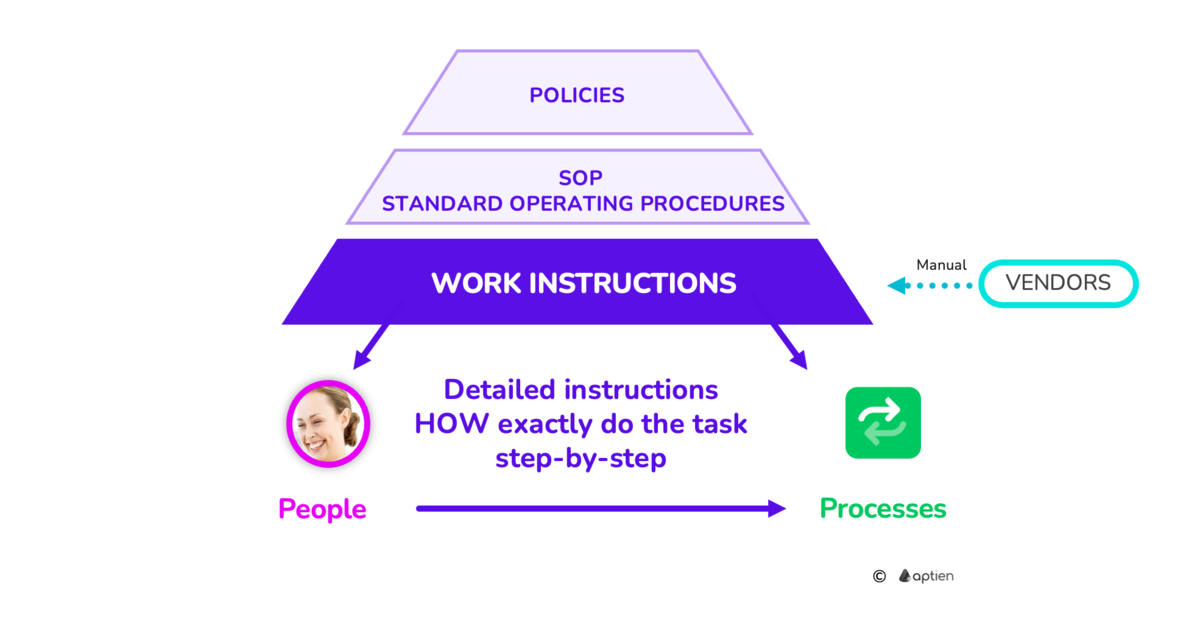Definition of Work Instructions
Work instructions are highly detailed documents that describe individual work tasks in depth. They follow workflows and include best practices for each activity. These documents provide precise instructions for workers, such as operating machines. They offer a structured and comprehensive description of how to perform and complete specific tasks, activities, or processes, or how to use particular tools, devices, or machines.
Work instructions include step-by-step descriptions of what the machine operator must do and how to do it. They precisely outline:
- How a particular activity, task, or process should be carried out.
- The exact order and detailed description of individual actions and how they should be performed.
- Who is responsible for performing the task.
Work instructions must be very specific and provide clear guidance to workers. They are available to ensure that workers know exactly how to perform their tasks as required. Along with work procedures and guidelines, work instructions are part of the organization’s internal regulations that help manage processes and people.
Why work instructions are important
- Work instructions define exactly what the worker must do, step-by-step
- Work instructions are often associated with the operation of a machine or device and are given by its manufacturer
- Failure to follow the work instructions may result in damage to the machine, device, or incorrect procedure or process result
- They are used in the training of employees after they start
- They help reduce error rates when performing work tasks and processes
Examples of work instructions
- How to use safety glasses when welding
- How to put into operation
- How to account for fixed assets
- How to apply for leave
